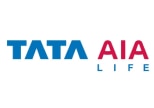What Are the Different Investment Types?
Table of Contents
Investment is a process of acquiring an asset with an aim to generate money from it. Generating income from an asset can be through regular income or appreciation of the asset. Appreciation is the increase in the value of the asset over time. Here is a detailed guide to learn what is an investment.
When an asset is purchased for the purpose of investment, the investor will not consume it. Instead, the investor will use it to generate wealth from it. The main purpose of investing is to acquire an asset right now and sell it at a higher price at a future date.
There are various types of investments available in the market. The most popular ones are stocks or equities, real estates, fixed deposits, gold and real estate. Mutual funds, Public Provident Fund, government bonds, corporate bonds, Exchange Traded Fund, and National Pension Scheme are few other well-known investment options. Each of these differ based on the returns they offer, level of risk, tenure, taxation, and whether the returns are guaranteed or market-linked.
Various Types of investments
There are different types of investment in the market, and we have bifurcated them into these main categories. They are:
Fixed Deposits
Fixed deposits or popularly known as FDs are usually offered by banks and financial institutions. FDs offer guaranteed returns and hence are the most popular investment type in India. They have a tenure ranging between 7 days and ten years. Fixed deposit interest rates range between 3%-7%. Moreover, senior citizens are offered additional interest on their FD investments. The FD interest rates are higher than the savings account interest rate. The interest payments are made monthly, quarterly, half-yearly, annually or at the time of maturity as per investor’s choice.
Investment in tax-saving FDs qualifies for tax benefits under Section 80C of the Income Tax Act, 1961. Moreover, the interest income is taxable as per the individual investor’s income tax slab rates. If the interest income exceeds INR 40,000 per annum (INR 50,000 for senior citizens), then the bank levies a TDS of 10% (20% if PAN Cards are not disclosed).
Bonds
Bonds are fixed-income instruments that offer a fixed rate of interest to the investors against the money invested. The investors lend money to the Government and corporations and get regular income in the form of interest. Bond issuers are the borrowers who raise money publicly or privately for funding various projects. A bond is an instrument that includes information on the interest, due date, maturity date, and bond terms. Investors of bonds are paid the entire amount after the bond expires (upon maturity). Investors can also sell the bond before maturity in the secondary market at higher prices and get profits.
Bonds are considered low-risk investments. However, there are certain risks attached to them. The most common risk is the default risk. Bond issuers can default on interest and principal repayment. However, investors can assess the risk in the bond before investing. They can do so by checking the credit rating of the bond. Bonds with higher credit rating are less likely to default on the payments than bonds with low credit rating. Bonds with AAA rating are considered the safest. Having bonds in one’s portfolio helps investors diversify their investment risk.
Public Provident Fund (PPF)
The Public Provident Fund is one of the post office savings schemes launched by the National Savings Institute. However, some private and nationalized banks are authorized to accept PPF investments. Returns from the scheme are guaranteed as the Government of India backs it. Hence are considered as low-risk investments. Furthermore, the PPF investments come with a 15 years lock-in period. Also, in case the investor wishes to extend the scheme, they can do so in blocks of 5 years. Furthermore, for the purpose of tax savings, one can invest in PPF.
The PPF interest rates are announced every quarter. The current rate is 7.10% for (Jan – March 2021). Also, the interest payments are made every year on the 31st of March. However, the interest is calculated monthly on the minimum PPF balance between the 5th and 30th each month. Investment up to INR 1,50,000 per annum, qualifies for tax exemption under Section 80C of the Income Tax Act 1961.
Stocks
Investment in stocks is known as an equity investment. Buying stocks or shares would give investors a part of the ownership of that company. Investors invest in stocks with a motive to earn regular income in the form of dividends and also gain from capital appreciation. When the stock prices rise, investors can benefit from selling the shares.
Returns from stocks are market-linked and hence is considered the riskiest investment type. Share prices fluctuate based on market demand and supply and market sentiments. A bullish sentiment will lead to an unexpected rally of the market, while a bearish sentiment will lead to a drop in share prices. Investing in the share market should be done with a long term investment horizon. In the short term, the market will fluctuate, which might lead to unexpected losses. Investors need to be patient while investing in inequities.
To invest in shares, investors need to have a demat and trading account. A demat account will hold the shares while a trading account will facilitate the purchase and sale of shares. Short term capital gains from stock investing (below one year) are taxable at 15%. At the same time, long term capital gains are taxable at 10%, if the gains are above INR 1,00,000 per annum.
Mutual Funds
Mutual funds are investment vehicles that pool money from investors to invest in assets like equity and debt. A mutual fund invests in shares, government bonds, corporate bonds, and other assets strategically. The fund house appoints a portfolio manager or fund manager manages the mutual fund.
Every mutual fund has an investment objective, and the fund’s investments revolve around this. Mutual funds can be of several types based on the assets. For example, equity funds, debt funds and hybrid funds are three types of mutual funds based on the asset class. Similarly, funds can also be categorized based on their strategy, structure and investment option. There are also mutual funds that offer tax benefits. These are called Equity Linked Savings Scheme. or ELSS funds. Investment in these funds qualifies for tax deduction under Section 80C of the Income Tax Act, 1961.
Returns from mutual funds are taxable as per the investment holding period. Short term capital gains are subject to short term capital gains tax (STCG tax). At the same time, the long term capital gains are subject to long term capital gains tax (LTCG tax). Furthermore, tax rates vary for equity and debt mutual funds.
Exchange-traded Funds (ETF)
The exchange-traded fund is a passive investment option that usually replicates the underlying index. In other words, ETFs portfolio matches the composition of an Index in the same proportion. An exchange-traded fund mimics and tracks the performance of the index. Hence ETFs are not actively managed by a portfolio manager. Furthermore, exchange-traded funds do not attempt to outperform their respective index. There are different types of ETFs, for example, equity ETFs, bond ETFs, currency ETF, commodity ETFs, etc. Also, one can easily buy or sell them on the stock market.
National Pension Scheme (NPS)
National Pension Scheme (NPS) is a scheme suitable for retirement. Investors who wish for regular income post their retirement and also save tax can invest in NPS. The Central Government backs them and hence are considered as low-risk investments.
An investor can invest during the period of their employment at regular intervals. The scheme allows the investor to withdraw a percentage of the accumulated amount post-retirement. Also, the investor receives the remaining amount monthly as a pension post-retirement. NPS has two types of accounts, namely NPS Tier I Account and NPS Tier II Account. Tier I account is a default account, while the Tier II account is a voluntary account.
NPS investments up to INR 1,50,000 qualify for tax benefits under Section 80C of the Income Tax Act, 1961. Furthermore, an additional INR 50,000 is eligible for tax deduction under Section 80CCD of the Income Tax Act, 1961.
Gold
Gold has always been a go-to asset or investment for Indians. It is also an asset with great emotional and social value. Buying gold coins, bars, biscuits, and jewelry on auspicious days has been a tradition in India for ages now. An asset with such sentimental value has also become popular in different forms. For example, gold bonds and gold ETFs are gaining popularity recently.
Gold is used as a hedge to protect one’s portfolio against potential market risk. Investing in gold doesn’t provide any regular income in the form of dividends and interest. However, it is a relatively liquid asset and can offer inflation-beating returns.
Real Estate
Investing in real estate involves purchase, ownership and management of the physical property. In other words, any investment in land, building, plant, property, etc. is considered as real estate investment. Investors' main aim of investing in real estate is to sell the asset at a higher price in the future or generate regular income by way of rent. Real estate investing best suits investors with a long term investment horizon. The prices of land and property do not fluctuate a lot in the short term. Hence investors with long term goals should look at investing in real estate. Before investing in real estate, investors have to be prudent and do their research about the market prices and get the papers provided by the seller authenticated by legal experts.
Conclusion
Investing isn’t just about parking money in an instrument. Shortlisting the right asset is utmost important. Also, one should consider multiple aspects before investing in an asset. Every asset has a unique investment objective. Therefore, it is very important to align one’s investment objective with that of the assets they wish to invest. All investment types do not meet the requirements of all the investors. What may be a good investment option for one investor doesn’t necessarily be the best for another. Hence, carefully aligning the financial plan and investment objective with the financial goal is important.
Also read: 5 Tips To Consider While Buying the Best Endowment Plan









































